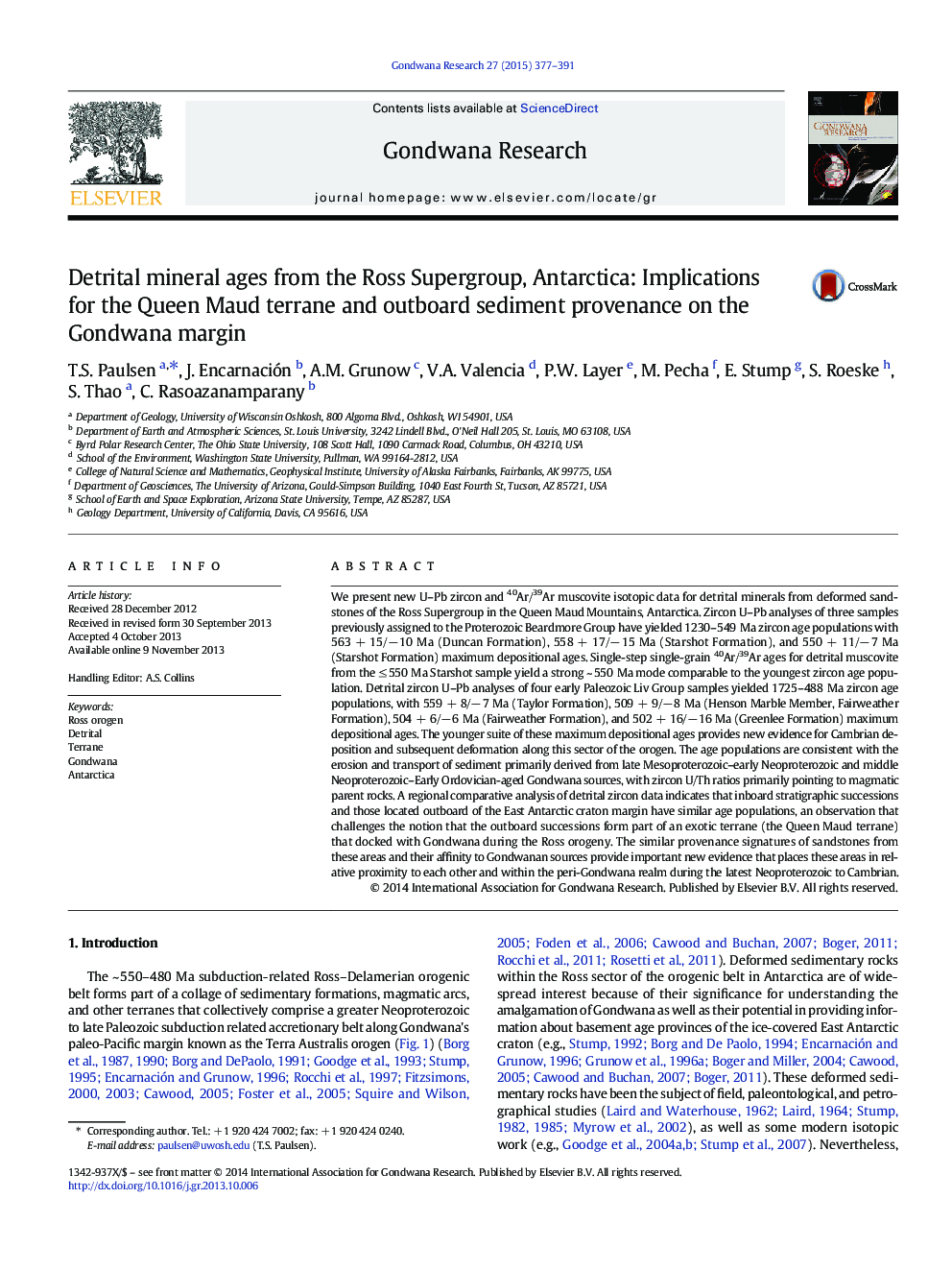| کد مقاله | کد نشریه | سال انتشار | مقاله انگلیسی | نسخه تمام متن |
|---|---|---|---|---|
| 4727193 | 1356364 | 2015 | 15 صفحه PDF | دانلود رایگان |

• Metasediments have late Neoproterozoic to early Paleozoic maximum depositional ages.
• Detrital mineral age populations are consistent with derivation from Gondwana.
• Outboard successions of the Queen Maud terrane belong to the larger Gondwanan realm.
We present new U–Pb zircon and 40Ar/39Ar muscovite isotopic data for detrital minerals from deformed sandstones of the Ross Supergroup in the Queen Maud Mountains, Antarctica. Zircon U–Pb analyses of three samples previously assigned to the Proterozoic Beardmore Group have yielded 1230–549 Ma zircon age populations with 563 + 15/− 10 Ma (Duncan Formation), 558 + 17/− 15 Ma (Starshot Formation), and 550 + 11/− 7 Ma (Starshot Formation) maximum depositional ages. Single-step single-grain 40Ar/39Ar ages for detrital muscovite from the ≤ 550 Ma Starshot sample yield a strong ~ 550 Ma mode comparable to the youngest zircon age population. Detrital zircon U–Pb analyses of four early Paleozoic Liv Group samples yielded 1725–488 Ma zircon age populations, with 559 + 8/− 7 Ma (Taylor Formation), 509 + 9/− 8 Ma (Henson Marble Member, Fairweather Formation), 504 + 6/− 6 Ma (Fairweather Formation), and 502 + 16/− 16 Ma (Greenlee Formation) maximum depositional ages. The younger suite of these maximum depositional ages provides new evidence for Cambrian deposition and subsequent deformation along this sector of the orogen. The age populations are consistent with the erosion and transport of sediment primarily derived from late Mesoproterozoic–early Neoproterozoic and middle Neoproterozoic–Early Ordovician-aged Gondwana sources, with zircon U/Th ratios primarily pointing to magmatic parent rocks. A regional comparative analysis of detrital zircon data indicates that inboard stratigraphic successions and those located outboard of the East Antarctic craton margin have similar age populations, an observation that challenges the notion that the outboard successions form part of an exotic terrane (the Queen Maud terrane) that docked with Gondwana during the Ross orogeny. The similar provenance signatures of sandstones from these areas and their affinity to Gondwanan sources provide important new evidence that places these areas in relative proximity to each other and within the peri-Gondwana realm during the latest Neoproterozoic to Cambrian.
Figure optionsDownload as PowerPoint slide
Journal: Gondwana Research - Volume 27, Issue 1, January 2015, Pages 377–391